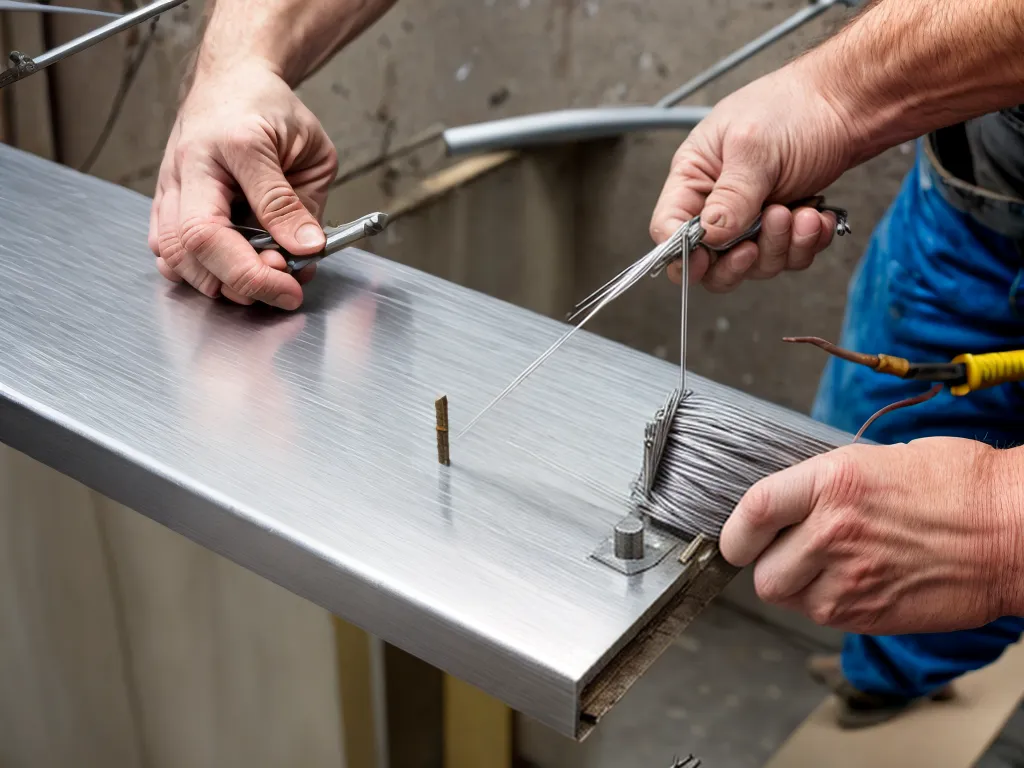
How to Safely Splice Aluminum Building Wire
Introduction
Splicing aluminum building wire correctly is crucial for safety and performance. Improper connections can lead to overheating, arcing faults, fires, and shock hazards. However, with the right materials and proper technique, aluminum wires can be spliced safely and reliably. In this guide, I will walk through the key steps for safely splicing aluminum building wire.
Reasons for Splicing Aluminum Wire
There are several common reasons I may need to splice aluminum building wire:
- Extending circuits during renovations or additions
- Repairing damaged wire segments
- Connecting aluminum wire to outlets, switches, and other devices
- Transitioning from aluminum to copper wire
Dangers of Improper Aluminum Wire Connections
Aluminum wire requires special treatment during splicing because of its different properties compared to copper wire. Key risks of improper connections include:
- Overheating - Aluminum has higher electrical resistance, so poor splice connections can get very hot. This heat can melt insulation and surrounding materials.
- Arcing - Loose connections can arc, spraying molten metal and leading to fires.
- Corrosion - Aluminum oxidizes quickly, so connections need protection from moisture and air. Corrosion increases resistance and can cause hot spots.
- Electric shock - Damaged or substandard connections raise the risk of shocks due to exposed conductors.
Following the right procedures is essential to avoid these hazards when working with aluminum building wire.
Recommended Materials for Splicing Aluminum Wire
To make safe, durable splices in aluminum wire, I recommend using these materials:
- Aluminum-rated wire connectors - Such as twist-on wire connector caps marked CO/ALR. These are engineered to penetrate aluminum's oxide layer.
- Anti-oxidant compound - Applying an anti-oxidant gel or paste prevents re-oxidization of bare aluminum.
- Electrical tape - For insulating and protecting completed splices. Heat- and UV-resistant tape works best.
- Wire crimp sleeves - Optional metal sleeves mechanically secure wires together. Recommended for high-current circuits.
Avoid using materials intended for copper wire only, such as twist-on connectors marked COPPER ONLY. Regular plastic electrical tape also tends to degrade over time.
Step-by-Step Splicing Procedure
Here is the full procedure I follow to safely connect aluminum wires:
1. Turn Off Power
Before starting any splice, I turn off power to the circuit at the main breaker panel. I double check wires with a non-contact voltage tester. Working on live wires is extremely dangerous.
2. Prepare Wires
I strip off 2-3 inches of insulation from each wire end using a sharp wire stripper. I clean wires with a wire brush to remove all oxidation. This helps connections bite through the oxide layer.
3. Apply Anti-Oxidant Compound
I wipe both wire ends with anti-oxidant gel or paste. This prevents re-oxidization after cleaning.
4. Twist Wires Together
I twist cleaned and prepared wire ends clockwise using pliers. The spiral wrap helps maintain solid contact between conductors.
5. Install Connector
I secure the twisted wire bundle together using an aluminum-rated connector. I follow the product instructions to ensure a tight connection. Common options are twist-on wire connector caps and crimp connectors.
6. Tape Splice
Once the connector is installed securely, I wrap the splice with electrical tape to insulate it. I overlap at least one inch on each side of the connector.
7. Restore Power and Test
After completing all splices, I turn power back on and test operation. I check for secure connections and no overheating using an infrared thermometer.
Tips for Safe and Reliable Aluminum Wire Splices
Based on my experience, here are some additional tips:
- Use the right connector - Do not use "COPPER ONLY" rated parts. The CO/ALR rating is critical.
- Keep connections tight - Loose splices cause overheating. I tighten connectors using insulated pliers.
- Inspect over time - I periodically check splices for corrosion and loose connections.
- Hire an electrician - For whole-home aluminum rewiring, hire a qualified electrician. Mistakes can be dangerous.
- Use junction boxes - Splices outside of boxes have greater shock and fire risk.
Conclusion
Splicing aluminum wiring carries serious risks if done improperly. However, by using the right materials, cleaning and preparing conductors, installing aluminum-rated connectors, insulating splices, and following other safety precautions I've outlined here, I can create safe, reliable wire connections that stand the test of time. Taking the time to splice carefully goes a long way to preventing electrical hazards.